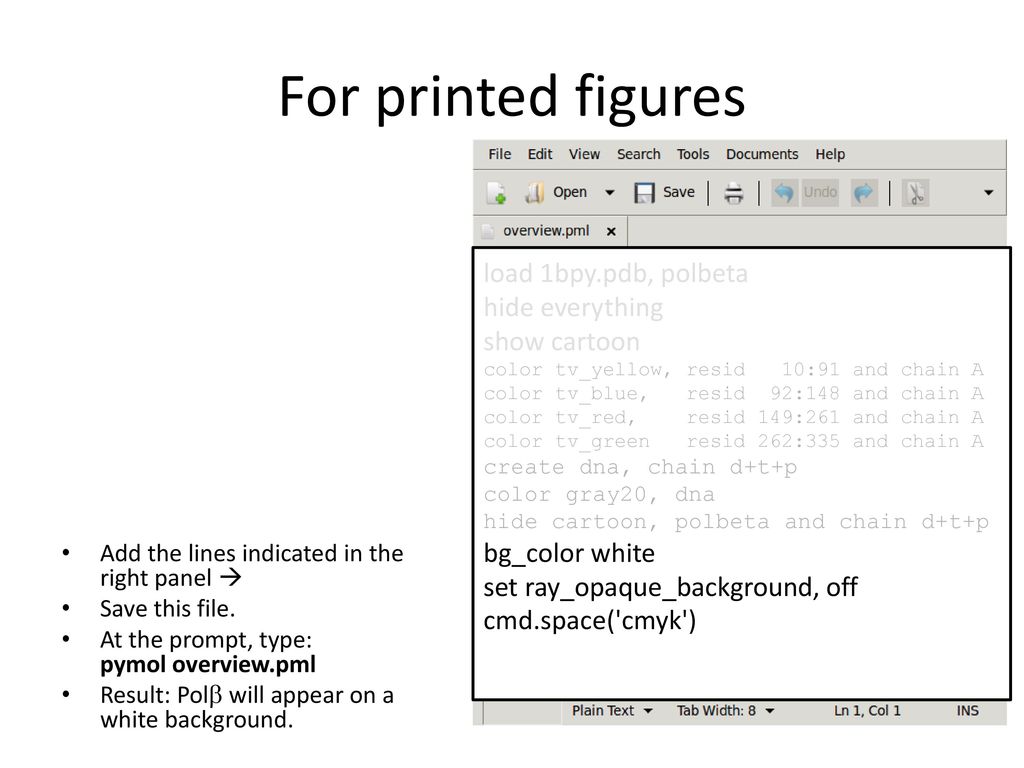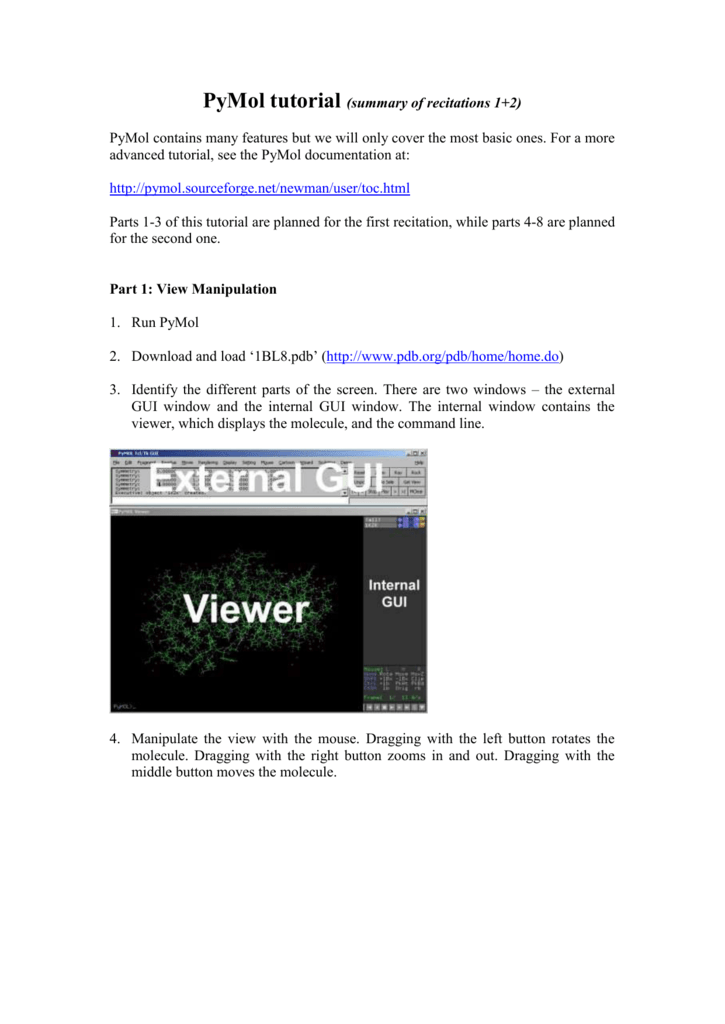

- PYMOL TUTORIAL HIDE SHOW CHAIN INSTALL
- PYMOL TUTORIAL HIDE SHOW CHAIN DOWNLOAD
- PYMOL TUTORIAL HIDE SHOW CHAIN WINDOWS
Alternatively you can type the commands directly at the prompt if you know what you are after (a list can be found here). Scrolling down this list will give various options that can be edited. You can adjust the global properties of the various views by selecting Settings->Edit All which will give you the following box: disappear), and when you select "surface" the surface of all atoms is shown (INCLUDING waters/ligands etc.). Note however when you choose "cartoon" the representation only shows protein atoms (ligands/waters/sugars etc. These are generally self explanatory and will lead to immediate changes in the viewer window. Perhaps the easiest boxes to start with are the show (S) and hide (H) boxes. You can also individually turn items on or off by clicking on the names which will turn dark grey/black when not selected. Obviously the ASHLC boxes next to the "all" will change properties across all items.

Every time you load a new object or make a selection you can change the properties of that object by clicking on these boxes and then selecting options from the subsequent drop down menus: A stands for Actions, S for Show, H for Hide, L for Labels and C for Colour. The name of the pdb file will appear in the right of the viewer window under the word all. To open a pdb file simply load it using File->Open in the Tcl/Tk window. Selecting atoms and/or residues can be achieved directly by left clicking on an atom, or more judiciously by right clicking on an atom and then choosing what you want to select (NB any selections made this way are automatically incorporated into your currently selected group).Įditing mouse mode can be used to physically move atoms in space, however as PyMOL is not a modeling program I would only recommend doing this if you are trying to make a hypothetical model. Generally, in viewing mode, left click allows you to rotate the molecule, middle click allows a translation, right click a zoom, and the wheel slabs. The different functions (including key/mouse combinations) are shown in the bottom right of the Viewer window (where it says " Mouse Mode"). If you do not have a three-button mouse with a wheel you can select 2 or 1 button viewing mode from the Mouse drop-down menu in the Tcl/Tk window. Most of the time the default (3-button Viewing) will be fine for moving around your molecule. There are a number of different mouse modes that can be used in PyMOL.
PYMOL TUTORIAL HIDE SHOW CHAIN DOWNLOAD
In addition you can download all sorts of extra scripts and plug ins written by other people. Pretty much everything you will ever want to do in PyMOL can be done using the mouse, however to get that extra bit of flexibility the GUI includes command prompts in the Tcl/Tk window (best one to use as you can see the history and error messages) and at the bottom of the viewer window.
PYMOL TUTORIAL HIDE SHOW CHAIN WINDOWS
This will give you two windows called the "PyMOL Tcl/Tk GUI" and the "PyMOL Viewer":Īlthough PyMOL can be run entirely from scripts, the presence of this GUI places PyMOL head and shoulders above previous picture-making programs such as Molscript or Bobscript. Once installed you can start PyMOL by double clicking on the icon (in MS Windows) or by typing pymol at the command prompt in Linux. Additional help can be found using the manual, wiki and FAQ on the PyMOL website.
PYMOL TUTORIAL HIDE SHOW CHAIN INSTALL
You can download an evaluation copy from the DeLano Scientific website which is very easy to install on a windows based machine. PyMOL is a great program for looking at molecular structures and making publication quality pictures or movies.


 0 kommentar(er)
0 kommentar(er)
